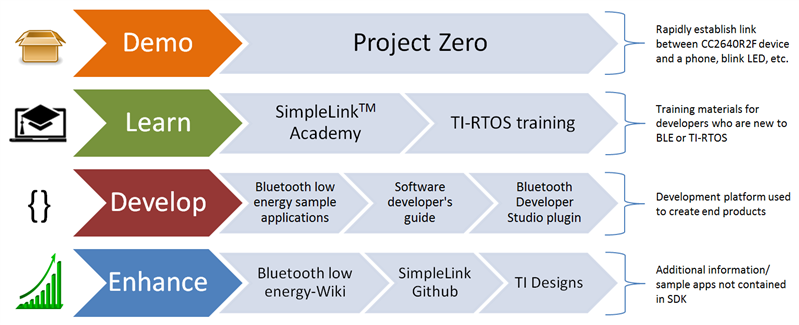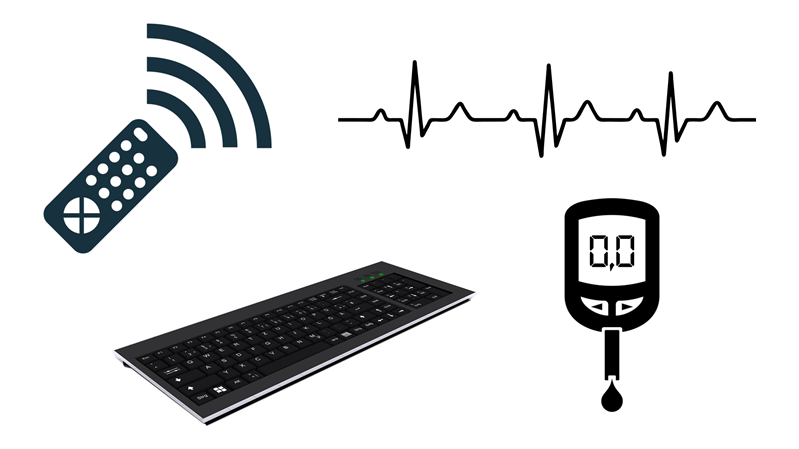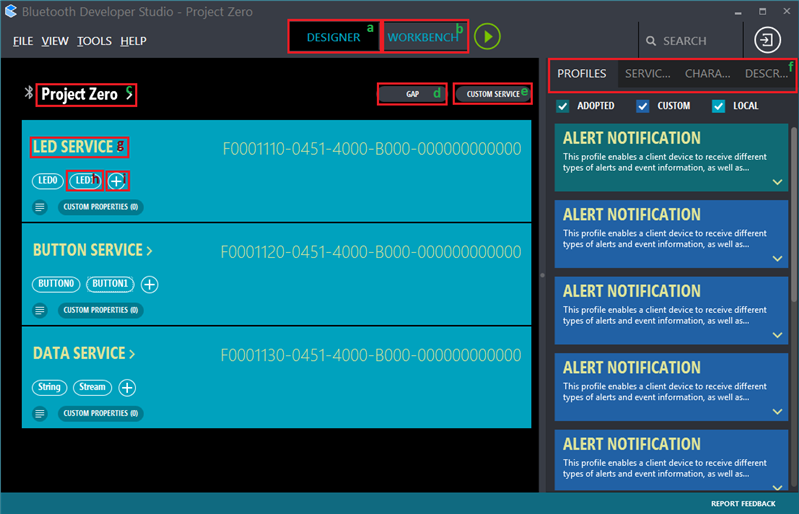SSZTA88 april 2017 CC2640R2F
It’s called a SimpleLink™ microcontroller (MCU), but is it really simple to use? The answer is yes. The CC2640R2F is part of the SimpleLink MCU platform, which fosters unified software development with rich documentation and fast evaluation in a cloud-based integrated development environment (IDE). Building on that foundation, a plethora of sample applications make Bluetooth® low energy software development as easy as 1, 2, 3 – literally:
1. Begin with TI’s Software Development Kit (SDK).
 Figure 1 Suggested Workflow for Getting Started with TI’s SimpleLink Bluetooth Low Energy Development Environment
Figure 1 Suggested Workflow for Getting Started with TI’s SimpleLink Bluetooth Low Energy Development EnvironmentThere is also support for more advanced projects such as multirole, over-the-air download (OAD), and Eddystone, an open Bluetooth low energy beacon format from Google. After downloading the SDK, you can leverage the feature-rich desktop-based IDE Code Composer Studio™ software. Or you can begin without downloading the SDK using Code Composer Studio Cloud, a browser-based IDE. Integrated Resource Explorer helps you easily find the necessary documentation for even faster evaluation.
2. Check Out the Bluetooth Low Energy Example Pack.
 Figure 2 Sample Application Projects Included in the Example Pack
Figure 2 Sample Application Projects Included in the Example Pack3. Harness the Bluetooth Developer Studio TI plugin.
 Figure 3 Implementing Project Zero Services Using Bluetooth Developer Studio
Figure 3 Implementing Project Zero Services Using Bluetooth Developer StudioFollowing TI’s three-step process makes Bluetooth low energy software development streamlined and simple. Ready to start? Download the SimpleLink CC2640R2 SDK today.
Additional resources:- Start evaluating with the SimpleLink Bluetooth low energy CC2640R2F LaunchPad development kit.
- Begin with Project Zero and propel your first Bluetooth low energy application.